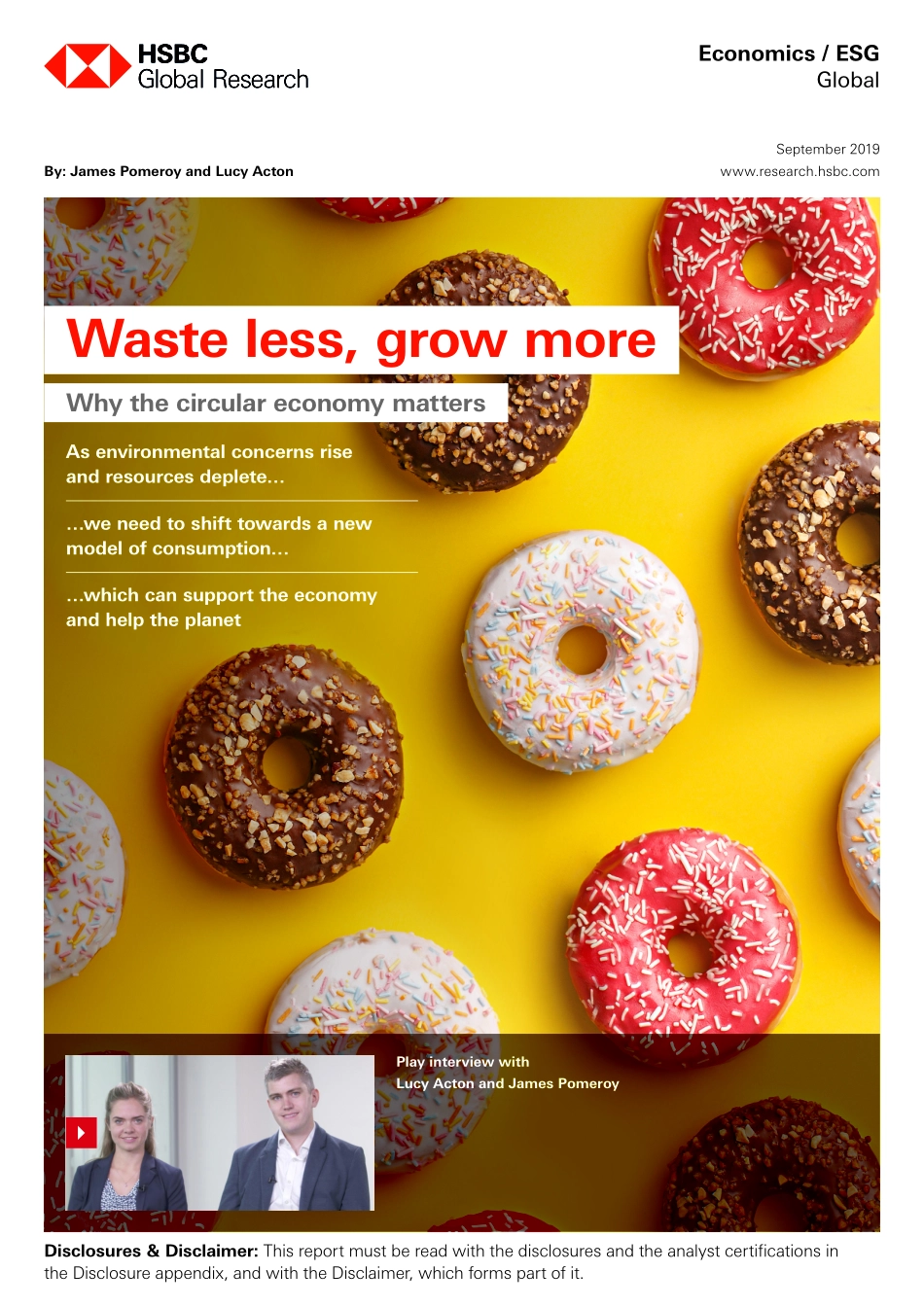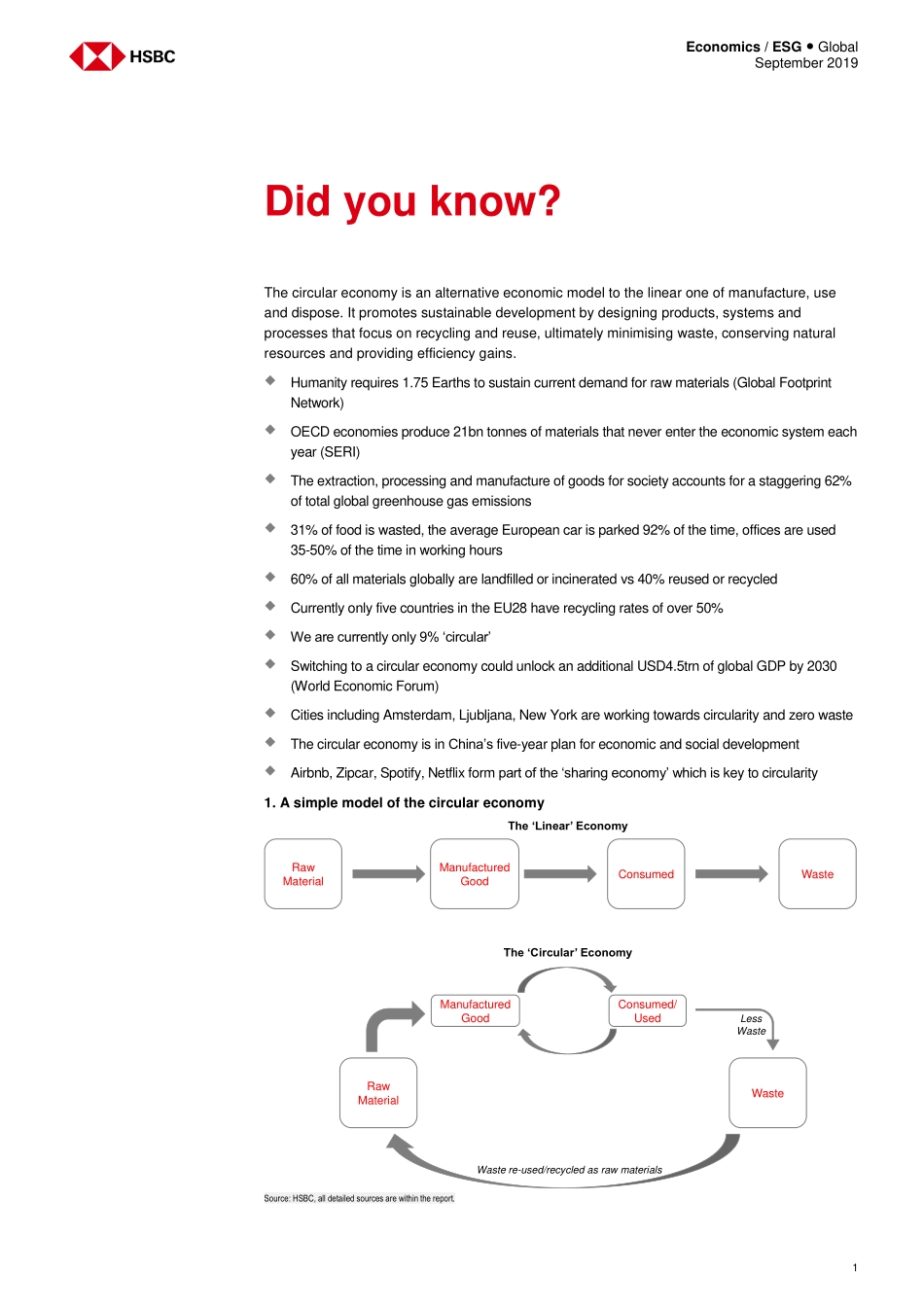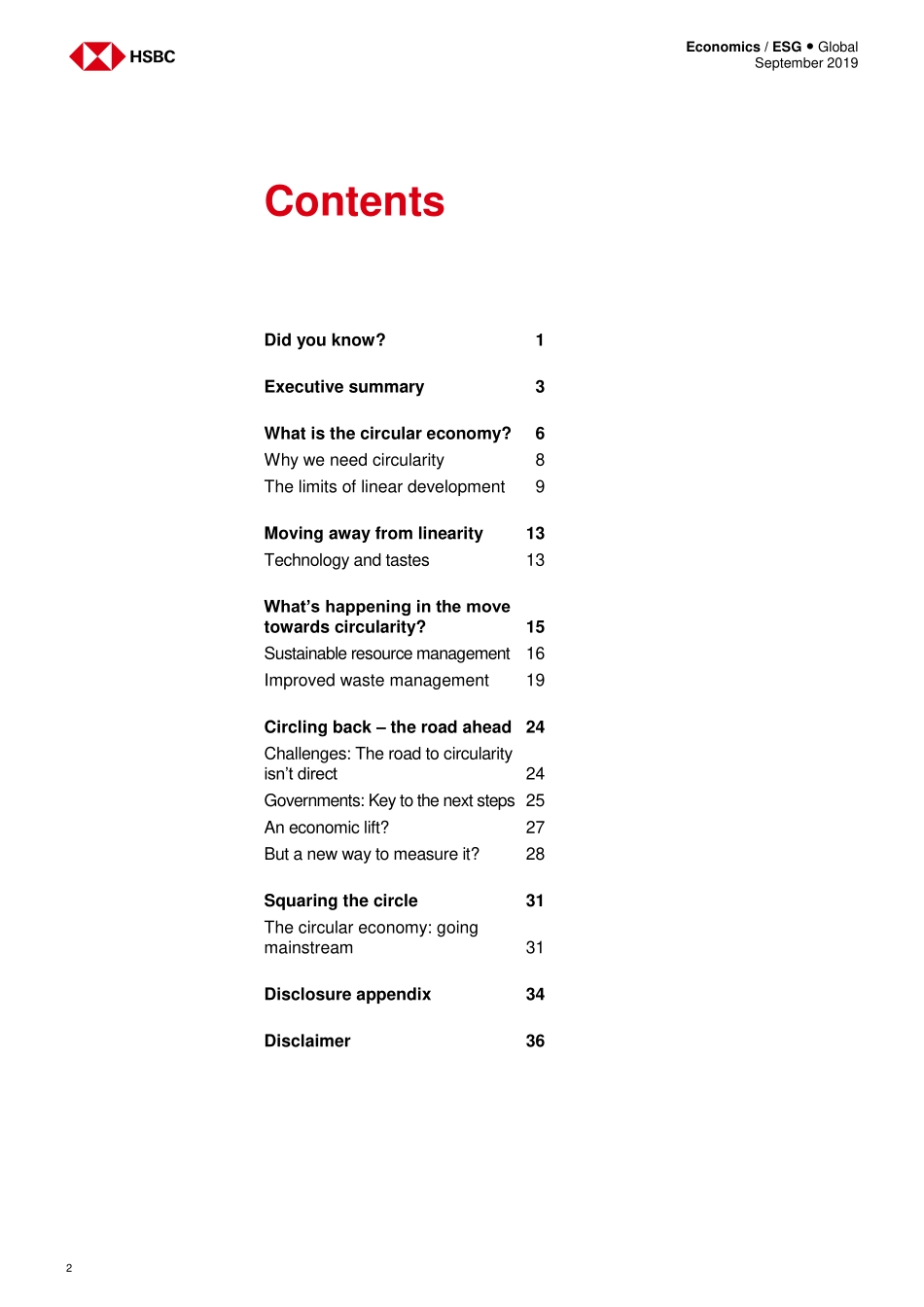www.research.hsbc.comDisclosures & Disclaimer: This report must be read with the disclosures and the analyst certifications inthe Disclosure appendix, and with the Disclaimer, which forms part of it.Play interview withLucy Acton and James PomeroyEconomics / ESGGlobalSeptember 2019By: James Pomeroy and Lucy Acton Waste less, grow moreWhy the circular economy mattersAs environmental concerns rise and resources deplete……we need to shift towards a new model of consumption……which can support the economy and help the planet 1 Economics / ESG ● Global September 2019 The circular economy is an alternative economic model to the linear one of manufacture, use and dispose. It promotes sustainable development by designing products, systems and processes that focus on recycling and reuse, ultimately minimising waste, conserving natural resources and providing efficiency gains. Humanity requires 1.75 Earths to sustain current demand for raw materials (Global Footprint Network) OECD economies produce 21bn tonnes of materials that never enter the economic system each year (SERI) The extraction, processing and manufacture of goods for society accounts for a staggering 62% of total global greenhouse gas emissions 31% of food is wasted, the average European car is parked 92% of the time, offices are used 35-50% of the time in working hours 60% of all materials globally are landfilled or incinerated vs 40% reused or recycled Currently only five countries in the EU28 have recycling rates of over 50% We are currently only 9% ‘circular’ Switching to a circular economy could unlock an additional USD4.5trn of global GDP by 2030 (World Economic Forum) Cities including Amsterdam, Ljubljana, New York are working towards circularity and zero waste The circular economy is in China’s five-year plan for economic and social development Airbnb, Zipcar, Spotify, Netflix form part of the ‘sharing economy’ which is key to circularity 1. A simple model of the circular economy Source: HSBC, all detailed sources are within the report. Raw MaterialManufactured GoodConsumedWasteThe ‘Linear’ EconomyThe ‘Circular’ EconomyRaw MaterialManufactured GoodConsumed/UsedWasteLess WasteWaste re-used/recycled as raw materialsDid you know? Economics / ESG ● Global September 2019 2 Did you know? 1 Executive summary 3 What is the circular economy? 6 Why we need circularity 8 The limits of linear development 9 Moving away from linearity 13 Technology and tastes 13 What’s happening in the move towards circularity? 15 Sustainable resource management 16 Improved waste management 19 Circling back – the road ahead 24 Challenges: The road to circularity isn’t direct 24 Governments: Key to the next steps 25 An economic lift? 27 But a new way to measure it? 28 Squaring the circle 31 The circular economy: going mainstream 31 Disclosure appendix 34 Disclaim...


